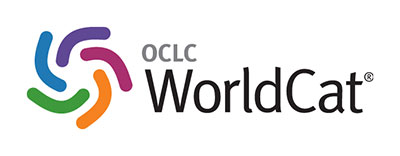Hubungan Kebiasaan Konsumsi Susu Sapi dengan Kejadian Akne Vulgaris
DOI:
https://doi.org/10.28932/jmh.v4i2.4025Keywords:
akne vulgaris, susu sapi, literature reviewAbstract
Akne vulgaris merupakan penyakit kulit jangka panjang akibat adanya penyumbatan folikel rambut oleh sel-sel kulit mati dan minyak pada kulit. Lebih dari 85% remaja di dunia mengalami akne vulgaris. Beberapa studi menunjukkan bahwa terdapat hubungan antara akne vulgaris dan faktor asupan nutrisi, salah satunya susu sapi. Penelitian bertujuan untuk mengetahui adanya hubungan antara kebiasaan konsumsi susu, tipe lemak susu dengan kejadian akne vulgaris. Metode penelitian menggunakan literature review dengan sumber data berasal dari 23 penelitian primer yang memenuhi kriteria inklusi dan eksklusi. Variabel yang digunakan yaitu akne vulgaris, kebiasaan konsumsi susu, frekuensi konsumsi susu, dan tipe susu. Pada umumnya, pada keseluruhan artikel menunjukkan adanya hubungan yang signifikan dari kebiasaan konsumsi susu dengan kejadian akne vulgaris. Secara umum, kebiasaan frekuensi susu ≥3 kali/minggu dapat meningkatkan faktor resiko atau tingkat keparahan akne vulgaris, begitu juga dengan susu rendah lemak atau susu skim. Simpulan, kebiasaan konsumsi susu memengaruhi kejadian akne vulgaris, frekuensi konsumsi susu juga merupakan faktor risiko yang dapat mempengaruhi akne vulgaris, namun perlu dilakukan lebih lanjut karena penelitian mengenai hubungan dari frekuensi konsumsi susu dilakukan pada berbagai negara yang berbeda-beda dengan kebiasaan konsumsi masyarakat yang juga berbeda. Kebiasaan konsumsi susu skim dan susu rendah lemak juga diketahui mempengaruhi kejadian akne vulgaris.Downloads
References
Mohiuddin A. A Comprehensive Review of Acne Vulgaris. J Clin Res Dermatology. 2019;6(2):1–34.
Degitz K, Placzek M, Borelli C, Plewig G. Pathophysiology of acne. JDDG - J Ger Soc Dermatology. 2007;5(4):316–23.
Jarrett P. Acne vulgaris. Encycl Pharm Pract Clin Pharm. 2019;40(3):699–712.
Cong TX, Hao D, Wen X, Li XH, He G, Jiang X. From pathogenesis of acne vulgaris to anti-acne agents. Arch Dermatol Res. 2019;311(5):337–49.
Moradi Tuchayi S, Makrantonaki E, Ganceviciene R, Dessinioti C, Feldman SR, Zouboulis CC. Acne vulgaris. Nat Rev Dis Prim. 2015;1:15029.
Williams HC, Dellavalle RP, Garner S. Acne vulgaris. Lancet. 2012;379(9813):361–72.
Fabbrocini G, Annunziata MC, D’Arco V, De Vita V, Lodi G, Mauriello MC, et al. Acne scars: Pathogenesis, classification and treatment. Dermatol Res Pract. 2010;2010(1):1-13
Bhate K, Williams HC. Epidemiology of acne vulgaris. Br J Dermatol. 2013;168(3):474–85.
Kokandi A. Evaluation of acne quality of life and clinical severity in acne female adults. Dermatol Res Pract. 2010;2010(1):16–8.
Tan AU, Schlosser BJ, Paller AS. A review of diagnosis and treatment of acne in adult female patients. Int J Women’s Dermatology. 2018;4(2):56–71.
Ollyvia ZZ, Febriyana N. The Association between Acne Vulgaris and Stress among Adolescents in Kenjeran, Surabaya. Jurnal Psikiatri Surabaya. 2021;10(1):20–26.
Plewig G, Melnik B, Chen W. Plewig and Kligman´s Acne and Rosacea. Plewig Kligman´s Acne Rosacea. 2019; (8):293-298
Danby FW. Nutrition and acne. Clin Dermatol. 2010;28(6):598–604.
Claudel JP, Auffret N, Leccia MT, Poli F, Dréno B. Acne and nutrition: hypotheses, myths and facts. J Eur Acad Dermatology Venereol. 2018;32(10):1631–7.
Çerman AA, Akta? E, Altunay IK, Arici JE, Tulunay A, Ozturk FY. Dietary glycemic factors, insulin resistance, and adiponectin levels in acne vulgaris. J Am Acad Dermatol. 2016;75(1):155–62.
Verruck S, Balthazar CF, Rocha RS, Silva R, Esmerino EA, Pimentel TC, et al. Dairy foods and positive impact on the consumer’s health. Adv Food Nutr Res. 2019;89:95–164.
Pappas A. The relationship of diet and acne. Dermatoendocrinol. 2009;1(5):262–7.
Kucharska A, Szmur?o A, Sinska B. Significance of diet in treated and untreated acne vulgaris. Postep Dermatologii i Alergol. 2016;33(2):81–6.
Pappas A, Liakou A, Zouboulis CC. Nutrition and skin. Rev Endocr Metab Disord. 2016;17(3):443–8.
Juhl CR, Bergholdt HKM, Miller IM, Jemec GBE, Kanters JK, Ellervik C. Dairy intake and acne vulgaris: A systematic review and meta-analysis of 78,529 children, adolescents, and young adults. Nutrients. 2018;10(8):1–13.
Danby FW. Acne and milk, the diet myth, and beyond. J Am Acad Dermatol. 2005;52(2):360–2.
Aalemi AK, Anwar I, Chen H. Dairy consumption and acne: A case control study in kabul, afghanistan. Clin Cosmet Investig Dermatol. 2019;12:481–7.
Jabbar A, Al Subaihawi K, Mohammed T, Taher J. Milk consumption among patients with acne vulgaris. EurAsian J Biosci Eurasia J Biosci. 2020;14:3935–8.
LaRosa CL, Quach KA, Koons K, Kunselman AR, Zhu J, Thiboutot DM, et al. Consumption of dairy in teenagers with and without acne. J Am Acad Dermatol. 2016;75(2):318–22.
Wolkenstein P, Machovcová A, Szepietowski JC, Tennstedt D, Veraldi S, Delarue A. Acne prevalence and associations with lifestyle: a cross-sectional online survey of adolescents/young adults in 7 European countries. J Eur Acad Dermatology Venereol. 2018;32(2):298–306.
Ismail NH, Manaf ZA, Azizan NZ. High glycemic load diet, milk and ice cream consumption are related to acne vulgaris in Malaysian young adults: a case control study. BMC Dermatol. 2012;16(12):13.
Suppiah TSS, Sundram TKM, Tan ESS, Lee CK, Bustami NA, Tan CK. Acne vulgaris and its association with dietary intake: A Malaysian perspective. Asia Pac J Clin Nutr. 2018;27(5):1141–5.
Burris J, Rietkerk W, Woolf K. Relationships of self-reported dietary factors and perceived acne severity in a cohort of New York young adults. J Acad Nutr Diet. 2014;114(3):384–92.
Tsoy N.O. Effect of milk and dairy products upon severity of acne for young people. World Appl Sci J. 2013;24(3):403–7.
Aghasi M, Motlagh AD, Eshraghian M. Association of acne and intake of dairy products and carbohydrates with high glycemic index : a case- control study. Int Res J Appl Basic Sci. 2013;4(12):4047–50.
Alghamdi H, Alhemel AM, Bukhari IA. Effect of milk and dairy products consumption on acne risk and severity in young adult patients with Acne vulgaris attending the dermatology clinics at King Fahd Hospital of the University in Alkhobar, Saudi Arabia. Sci Med Sci. 2017;4(12):4–8.
Okoro EO, Ogunbiyi AO, George AO, Subulade MO. Association of diet with acne vulgaris among adolescents in Ibadan, southwest Nigeria. Int J Dermatol. 2016;55(9):982–8.
Penso L, Touvier M, Deschasaux M, Szabo De Edelenyi F, Hercberg S, Ezzedine K, et al. Association between Adult Acne and Dietary Behaviors: Findings from the NutriNet-Santé Prospective Cohort Study. JAMA Dermatology. 2020;156(8):854–62.
Al Hussein SM, Al Hussein H, Vari CE, Todoran N, Al Hussein H, Ciurba A, et al. Diet, Smoking and Family History as Potential Risk Factors in Acne Vulgaris – a Community-Based Study. Acta Medica Marisiensis. 2016;62(2):173–81.
Juhl CR, Bergholdt HKM, Miller IM, Jemec GBE, Kanters JK, Ellervik C. Lactase persistence, milk intake, and adult acne: A mendelian randomization study of 20,416 danish adults. Nutrients. 2018;10(8).
Niltem E, Thitthiwong P. Prevalence and associated factors of acne vulgfaris among high school students in rural and urban areas of Thailand: a cross sectinal study. J Southeast Asian Med Res. 2019; 3(1): 25-31
Pereira Duquia R, Da Silva Dos Santos I, De Almeida H, Martins Souza PR, De Avelar Breunig J, Zouboulis CC. Epidemiology of Acne Vulgaris in 18-Year-Old Male Army Conscripts in a South Brazilian City. Dermatology. 2017;233(2–3):145–54.
Akpinar Kara Y, Ozdemir D. Evaluation of food consumption in patients with acne vulgaris and its relationship with acne severity. J Cosmet Dermatol. 2020;19(8):2109–13.
Melnik BC. Evidence for acne-promoting effects of milk and other insulinotropic dairy products. Nestle Nutr Work Ser Pediatr Progr. 2011;67:131–45.
Melnik BC. Lifetime impact of cow’s milk on overactivation of mtorc1: From fetal to childhood overgrowth, acne, diabetes, cancers, and neurodegeneration. Biomolecules. 2021;11(3):1–39.
Adam J. Milk Allergy. Br Med J. 1936;2(3962):1226.
O’Regan J, Ennis MP, Mulvihill DM. Milk proteins [Internet]. Handbook of Hydrocolloids: Second Edition. Woodhead Publishing Limited; 2009. 298–358 http://dx.doi.org/10.1533/9781845695873.298
Clatici VG, Voicu C, Voaides C, Roseanu A, Icriverzi M, Jurcoane S. Diseases of Civilization - Cancer, Diabetes, Obesity and Acne - the Implication of Milk, IGF-1 and mTORC1. Maedica (Buchar). 2018;13(4):273–81.
Melnik BC. Milk - The promoter of chronic Western diseases. Med Hypotheses. 2009;72(6):631–9.
AlKhabbaz M, Al-Taiar A, Saeed M, Al-Sabah R, Albatineh AN. Predictors of Acne Vulgaris among Adolescents in Kuwait. Med Princ Pract. 2020;29(4):310–7.
Bajelan A, Ghaebi M, Javadi M, Barikani A, Beheshti A, Bargahi M, et al. The Association Between the Incidence of Acne Vulgaris and Lifestyle Factors Including Dietary Habits, Physical Activity, and Bathing Frequency. J Ski Stem Cell. 2021;7(3):6–11.
Say YH, Heng AHS, Reginald K, Wong YR, Teh KF, Rawanan Shah SM, et al. Modifiable and non-modifiable epidemiological risk factors for acne, acne severity and acne scarring among Malaysian Chinese: a cross-sectional study. BMC Public Health. 2021;21(1):1–12.
Di Landro A, Cazzaniga S, Parazzini F, Ingordo V, Cusano F, Atzori L, et al. Family history, body mass index, selected dietary factors, menstrual history, and risk of moderate to severe acne in adolescents and young adults. J Am Acad Dermatol. 2012;67(6):1129–35.
Anaba EL, Oaku IR. Adult female acne: A cross-sectional study of diet, family history, body mass index, and premenstrual flare as risk factors and contributors to severity. Int J Women’s Dermatology. 2021;7(3):265–9.
Anadón A, Martínez-Larrañaga MR, Ares I, Martínez MA. Overview: “Preclinical Studies of Dairy Milk and Products on Health” . Nutrients in Dairy and Their Implications for Health and Disease. Elsevier Inc.; 2017. p 259–86..
Aghasi M, Golzarand M, Shab-Bidar S, Aminianfar A, Omidian M, Taheri F. Dairy intake and acne development: A meta-analysis of observational studies. Clin Nutr. 2019;38(3):1067–75.
Downloads
Published
How to Cite
Issue
Section
License
Copyright (c) 2022 Harisma Harisma, Bambang Wirjatmadi, Stefania W Setyaningtyas

This work is licensed under a Creative Commons Attribution-NonCommercial 4.0 International License.
Authors who publish with this journal agree to the following terms:
- Authors retain the copyright and grant the journal right of first publication with the work
simultaneously licensed under a Creative Commons Attribution-NonCommercial 4.0 International License that allows others to share the work with an acknowledgement of the work's authorship and initial publication in this journal. - Authors are able to enter into separate, additional contractual arrangements for the nonexclusive distribution of the journal's published version of the work (e.g., post it to an institutional repository or publish it in a book), with an acknowledgement of its initial publication in this journal.
 This work is licensed under a Creative Commons Attribution-NonCommercial 4.0 International License.
This work is licensed under a Creative Commons Attribution-NonCommercial 4.0 International License.

















